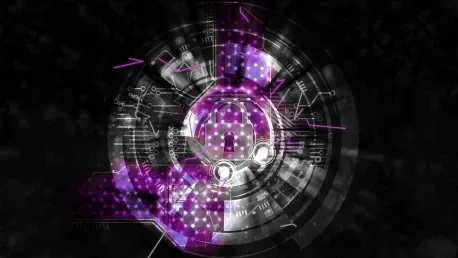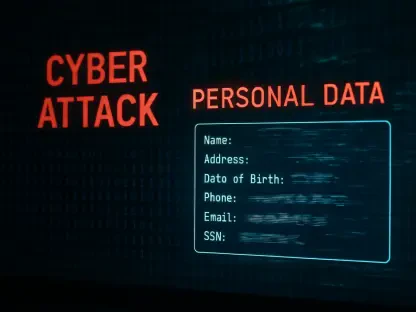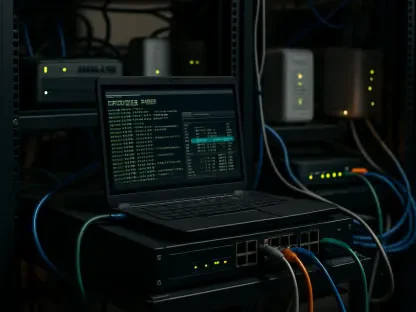The launch of the Advanced Threat Protection Center (ATPC) by 1898 & Co. in Houston marks a pivotal moment in the effort to strengthen cybersecurity for critical infrastructure in the United States. As cyber threats become increasingly sophisticated and targeted, the ATPC aims to provide robust defenses for key sectors such as energy, oil and gas, chemicals, power utilities, pipelines, water, and manufacturing. The center also extends its services to smaller utilities and municipalities, providing them with the tools and expertise needed to protect against emerging cyber threats.
Addressing the Ever-Evolving Cyber Threat Landscape
In recent years, the landscape of cybersecurity has changed dramatically, with a significant increase in the complexity and frequency of cyber attacks targeting critical infrastructure. Attackers have evolved from employing simple business email compromises to more elaborate techniques that infiltrate both IT and OT systems. The ATPC is designed to mitigate these risks by focusing on the convergence of IT and OT security, ensuring comprehensive protection for interconnected systems.
Cyber threat actors are becoming more adept at exploiting the interconnectivity between IT and OT networks, leading to disruptions with far-reaching consequences. This necessitates a robust response, which the ATPC aims to provide through advanced threat detection and response capabilities. Experts like Jason Christopher from Energy Impact Partners emphasize that the ATPC will be crucial in addressing these sophisticated threats, offering a higher level of security for critical infrastructure.
The attackers’ ability to maneuver within interconnected IT and OT systems has created new vulnerabilities that must be addressed proactively. The ATPC’s approach involves real-time monitoring and advanced threat intelligence to preemptively counteract these sophisticated efforts. Adapting to the intricacies of IT-OT convergence, the initiative focuses on creating fortified defenses that account for the nuances of both technological realms, ensuring that critical infrastructure remains resilient in the face of ever-evolving cyber threats.
Leveraging Advanced Security Platforms and Technologies
The ATPC will utilize a range of advanced security platforms and technologies to protect critical infrastructure. Platforms like Essence and CRISP focus on OT and IT security respectively, enabling the center to offer a comprehensive suite of services. These platforms are designed to detect and respond to cyber threats in real-time, providing immediate protection against emerging threats. The advanced threat protection measures deployed are intended to seamlessly integrate into existing systems, enhancing overall security posture.
The integration of these advanced platforms with the ATPC’s operations ensures that both large industrial sectors and smaller utilities have access to cutting-edge security measures. This approach not only enhances the overall security posture of critical infrastructure but also promotes collaboration and knowledge sharing among different sectors. Gabe Sanchez from 1898 & Co. highlights that the center’s use of these technologies will be instrumental in safeguarding against cyber threats.
As these advanced security platforms continuously evolve, the ATPC’s strategy involves iterative improvements and the deployment of innovative solutions tailored to the unique needs of each sector. By harnessing data analytics, machine learning, and artificial intelligence, the center aims to stay ahead of cyber threats, providing dynamic responses to emerging risks. The focus remains on creating a future-proof cybersecurity framework that evolves in tandem with technological advancements, ensuring sustained protection amidst an ever-changing threat landscape.
Regulatory Landscape and Cybersecurity Standards
The regulatory landscape for cybersecurity has seen significant activity in recent years, with new standards and regulations being developed to protect critical infrastructure. 2022 and 2024 have been particularly active years, with increased cyber standards for ICS and OT cybersecurity. Frameworks such as NIST and IEC 62443 provide guidelines for implementing robust security measures, and regulatory bodies like FERC, TSA, and the SEC play a crucial role in enforcing these standards. Compliance with these regulations is essential for maintaining the security of critical infrastructure.
The ATPC will help organizations navigate this complex regulatory environment, ensuring compliance with relevant standards and regulations. Victor Atkins from 1898 & Co. points out that the center’s expertise in regulatory compliance will be a key asset for organizations looking to enhance their cybersecurity measures. By staying up-to-date with the latest regulations, the ATPC aims to provide a comprehensive security strategy that aligns with industry best practices, promoting a culture of security across the board.
The evolving regulatory framework necessitates continuous vigilance and adjustment to ensure that organizations meet or exceed established cybersecurity expectations. The ATPC’s efforts in curating a comprehensive understanding of these regulatory requirements enable organizations to implement proactive measures that safeguard against potential compliance failures. This meticulous focus on regulatory adherence underscores the center’s commitment to fostering a resilient cybersecurity environment that not only meets but anticipates future statutory needs.
The Role of Corporate Leadership in Cybersecurity
As cybersecurity becomes a boardroom conversation, the role of corporate leadership in safeguarding critical infrastructure is increasingly important. CEOs and boards are now more accountable for their organization’s cybersecurity posture, emphasizing the need for trained leaders who understand the complexities of modern cyber threats. This shift has led to a greater focus on cybersecurity as a strategic priority, with organizations investing in the necessary resources to defend against cyber attacks.
The ATPC will play a significant role in supporting corporate leadership in their cybersecurity efforts. By providing specialized training and resources, the center aims to equip leaders with the knowledge and skills needed to make informed decisions about their organization’s security measures. Jonathon Gordon from TP Research notes that this focus on leadership is essential for creating a culture of cybersecurity within an organization, ensuring that it is viewed as a critical component of overall business strategy.
Corporate accountability and proactive engagement in cybersecurity discussions set the tone for the entire organization, engendering a culture of vigilance and resilience. The ATPC’s commitment to empowering leadership involves not only educating executives but also fostering an environment where cybersecurity considerations are embedded into every strategic decision. This collaborative and informed approach ensures that organizational leaders are well-equipped to navigate the complex and dynamic threat landscape, reinforcing a strong security posture across all levels.
Cross-Sector Collaboration and Knowledge Sharing
One of the key strengths of the ATPC is its ability to foster collaboration and knowledge sharing across different sectors. By working with various stakeholders, including the American Public Power Association (APPA), the center aims to extend its reach and provide tailored security solutions for smaller utilities and municipalities. This collaborative approach ensures that all organizations, regardless of size, have access to the expertise and resources needed to defend against cyber threats.
Marco Ayala from InfraGard Houston emphasizes that cross-sector collaboration is essential for creating a unified defense against cyber threats. The ATPC’s efforts to bring together different sectors and share knowledge will be instrumental in building a more resilient cybersecurity ecosystem. By leveraging the collective expertise of various industries, the center aims to stay ahead of emerging threats and provide comprehensive protection for critical infrastructure, ensuring a symbiotic relationship across the entire cybersecurity landscape.
Building robust networks of communication and information sharing extends the reach and impact of the ATPC’s initiatives, forging alliances that transcend individual organizational boundaries. The center’s focus on cross-sector collaboration highlights the importance of shared intelligence and coordinated defenses, enabling a collective response to cyber threats. This integrative approach underpins the creation of a resilient cybersecurity framework that benefits from the unique strengths and insights of diverse sectors, fostering a comprehensive and agile defense mechanism.
Enhancing Cybersecurity Through Continuous Improvement
The opening of the Advanced Threat Protection Center (ATPC) by 1898 & Co. in Houston signifies a crucial milestone in bolstering cybersecurity for the United States’ critical infrastructure. As cyber threats become more advanced and specific, the ATPC is committed to delivering strong defenses for vital sectors, like energy, oil and gas, chemicals, power utilities, pipelines, water, and manufacturing. This initiative aims to enhance the resilience of these sectors against sophisticated cyber-attacks that could potentially disrupt their operations. In addition to supporting large industries, the ATPC extends its services to smaller utilities and municipalities, equipping them with the necessary tools and expertise to defend against emerging digital threats. This dual approach ensures that both large-scale and smaller entities can adequately protect themselves from the evolving landscape of cyber threats. The ATPC’s establishment reflects a forward-thinking strategy to safeguard the country’s infrastructure, ensuring the security and stability of essential services in a world where digital threats are continually evolving.









